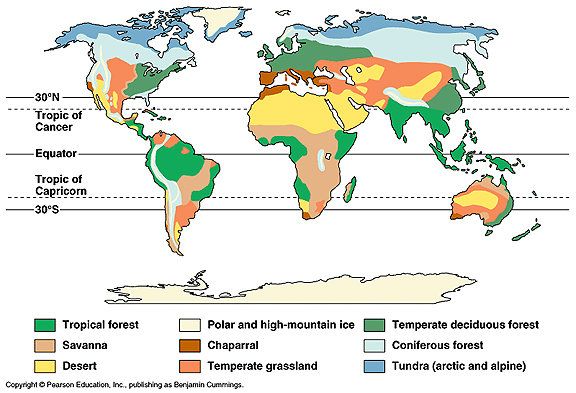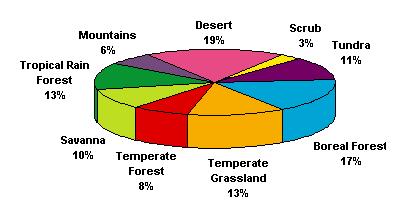

Jessica Spencer
Christina Krupa
Computers in Education
Professor Draker
05/02/2011
Lesson Plan
Unit topic or theme: Science
Grade: Fifth
Lesson topic or theme: Biomes of the World
Lesson Objectives:
1. Students will be able to identify the key characteristics of each biome.
2. Students will be able to identify the environmental factors and the plants and animals of each biome.
3. Students will be able to identify the location of different biomes on a world map.
4. Students will also create a Travel Brochure that displays their comprehension of the relationships between environmental factors and the plants and animals within a biome.
Instructional Technique: Lecture, independent work, group work.
Instructional Materials: Copies Biome World Map for each student, Interactive Website, pencils, scissors, glue, construction paper, markers, colored pencils, and stickers.
Theoretical
Perspective: It is important for students to be introduced to science at
early ages so that they may further their intelligence in the years to come.
Science allows their minds to expand creatively, think critically in the world
around them, and to develop problem solving skills. Children at early ages are
naturally intrigued by their environment which consists of millions of
organisms, including specifically plants and animals. There are many hands on
activities and experiments that can be offered with this subject and it is
important to teach children these topics and issues so that they may better
coexist in the world. With the growth of human population, it is important to
understand our impact in the biomes we live in and to better understand the
preservation of each plant and animal specific to each region. Each organism,
plant, animal, and humans alike, are all dependent on one another and it is
important to ensure their survival for their benefit and ours.
A. Introductory Activity: Introduce the lesson topic with the reading of the book, We are the Earth, by Bobbie Kalman. After the reading we will ask the students some questions, for example “What do we know about pollution?”, “Why is it important to preserve endangered animals?”, “Why do some animals only live in certain regions of the world?”, “How does climate affect where we live?”
B. Step-by-step: The first step we will do is to explain to students that there are six major land biomes on the Earth. Name them and show where they are located on a classroom map.
Next, point out that climate is the major factor that distinguishes each biome.
Ask, “What biome do we live in?”, “Have you visited any other biomes and if so, tell us about it.”
We will then pass out handouts that display the different climate patterns of the world.
Ask students if they can make connections to the land regions and their associated climate.
The students will then work on the website entitled, ‘A Trip around the World’. They will learn more interesting facts about each biome in order to prepare themselves for the next activity.
Have students get into groups:
•Tundra (Arctic/Alpine),
•Taiga/Coniferous Forest,
•Temperate Deciduous Forest,
•Grassland/Savanna,
•Tropical Rain Forest,
•Shrubland/Chaparral, and
•Desert.
Next, each group will be assigned a separate biome and the students will research unique characteristics of each biome. This will include: locations, percentage of the world’s land mass this biome covers, average temperature, average rainfall, seasonal patterns, unique vegetation, diversity of animal life, average human population, and any other unique facts your group discovers.
The student groups will then also create a Travel Brochure to go along with their assigned biome. The brochure should include all of the topics researched along with popular destinations located in the biome and any other important/ unique information you uncover. (Creativity and neatness will also be a factor!)
C. Closure: The students will present their Travel Brochure to the class one week after the project is assigned. During the presentations, all students are to pay careful attention as there will be a possible quiz on the world’s biomes during that same week.
Adaptations for Different Learners: To ensure that all students are able to effectively participate in the lesson, reasonable accommodations can be made for those who may need additional assistance, whether they are physically or academically challenged. If I realize that the students are crunched for time in their activities I can allow extra time for the groups. If students are having difficulty following directions on the computer screen, printed directions can be handed out from the website.
Evaluation: (Formal) the students will be evaluated based on the completion of the website activity and their Travel Brochure and presentation. (Informal) The students will be evaluated based on the level of participation during the closing discussion during presentations.
Handouts:

